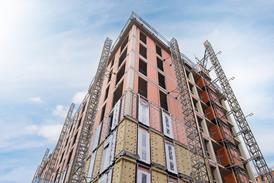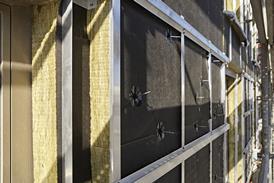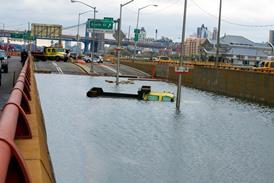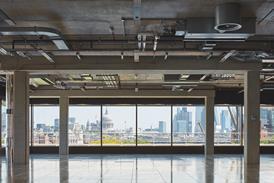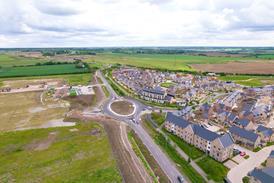- News

All the latest updates on building safety reformRegulations latest
- Focus
Close menu
- Home
- News
- Focus
- Comment
- Events
- CPD
- Building the Future
- Jobs
- Data
- Subscribe
- Building Boardroom
- Previous slide
- 1 of 1
- Next slide
| …or blow your house down. What we can do now | |||
| Existing buildings | New build | Annual cost of no action | |
| Roofs | Replace loose tiles | Choose fixings for 5-10% higher wind loads | Gales, £1-2bn Fixings, £2.5-7bn |
| Windows | Maintain well and use good-quality replacements | Choose materials with good ultraviolet resistance and watertightness | PVCu replacements, £2.4bn |
| Masonry | Render if suffering from rain penetration | Use good building practice for lightweight blockwork to avoid cracking | – |
| Concrete | Inspect regularly for corrosion of reinforcement | Choose formulation and reinforcement on the assumption of higher rainfall and CO2 | – |
| Driving rain | Render if needed | Design for higher levels of exposure | – |
| Foundations | Underpin or repair subsidence | Increase foundation depth on susceptible clay soils by 0.5 m | £200-400m |
| Flooding | Improve defences if possible, review consequences | Avoid flood plains if possible. Raise floor levels, avoid underfloor wiring | £200m |
| Coastal erosion | Manage retreat if possible. | Do not build on vulnerable areas | £10-30bn of risk (not annual) |
| Water | Recycle used water or collect rainwater for gardens | Consider water resources when planning new developments | – |
| Ventilation | Raise temperature to dispel damp | Plan for good natural ventilation, especially in the south in autumn. Consider mechanical ventilation only as last resort | – |
| Heating/Cooling | If necessary, use some of anticipated 12-19% saving in heating energy to improve comfort and reduce damp | Design new buildings to minimise air-conditioning | – |
| Regulations Take climate change predictions into account when revising codes. Always build to better than minimum standards | |||










